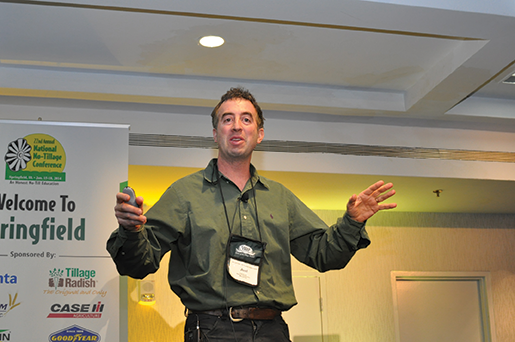Two well-regarded academic researchers will be presenting at the 2nd annual National Strip-Tillage Conference on Aug. 5-6 in Iowa City, Iowa.
 University of Minnesota nutrient management specialist Fabian Fernandez understands the nutrient application flexibility that a strip-till system offers. His current research focuses on nutrient management in corn cropping systems and identifying and implementing sustainable nitrogen management practices aimed at minimizing environmental impacts and improving yields.
University of Minnesota nutrient management specialist Fabian Fernandez understands the nutrient application flexibility that a strip-till system offers. His current research focuses on nutrient management in corn cropping systems and identifying and implementing sustainable nitrogen management practices aimed at minimizing environmental impacts and improving yields.
Both strip-till and no-till offer important benefits under some conditions and drawbacks under others. In no-till systems, slowly mobile nutrients such as phosphorus and potassium are typically broadcast-applied on the surface. This application technique creates a vertical stratification of these nutrients with higher concentrations in the surface compared to the subsurface. Strip-till offers more flexibility, since it is easy to combine deep placement of nutrients with the tillage operation.
During a general session, Fernandez will compare nutrient management?practices for strip-till and no-till and how to properly take soil samples to accurately represent the fertility of a field when banding fertilizer in the strip vs. a broadcast application.
Dr. Joel Gruver grew up on a small, diversified farm in rural Maryland. Since 2007, he has been a professor of Soil Science and Sustainable Agriculture in the School of Agriculture at Western Illinois University in Macomb, Ill. He’s conducted intense research tied to cover crop usage in conservation-tillage systems and organic grain production.
 Gruver will focus his general session on the integration of cover crops?within strip-tillage systems and explore key opportunities and challenges based on recent research results and the experiences of innovative farmers using both strip-till and cover crops. He will also discuss the impact of cover crops on nutrient availability and soil moisture dynamics within strip-tillage systems and also consider the compatibility of cover crops with current strip-till technology and potential new technologies.
Gruver will focus his general session on the integration of cover crops?within strip-tillage systems and explore key opportunities and challenges based on recent research results and the experiences of innovative farmers using both strip-till and cover crops. He will also discuss the impact of cover crops on nutrient availability and soil moisture dynamics within strip-tillage systems and also consider the compatibility of cover crops with current strip-till technology and potential new technologies.






